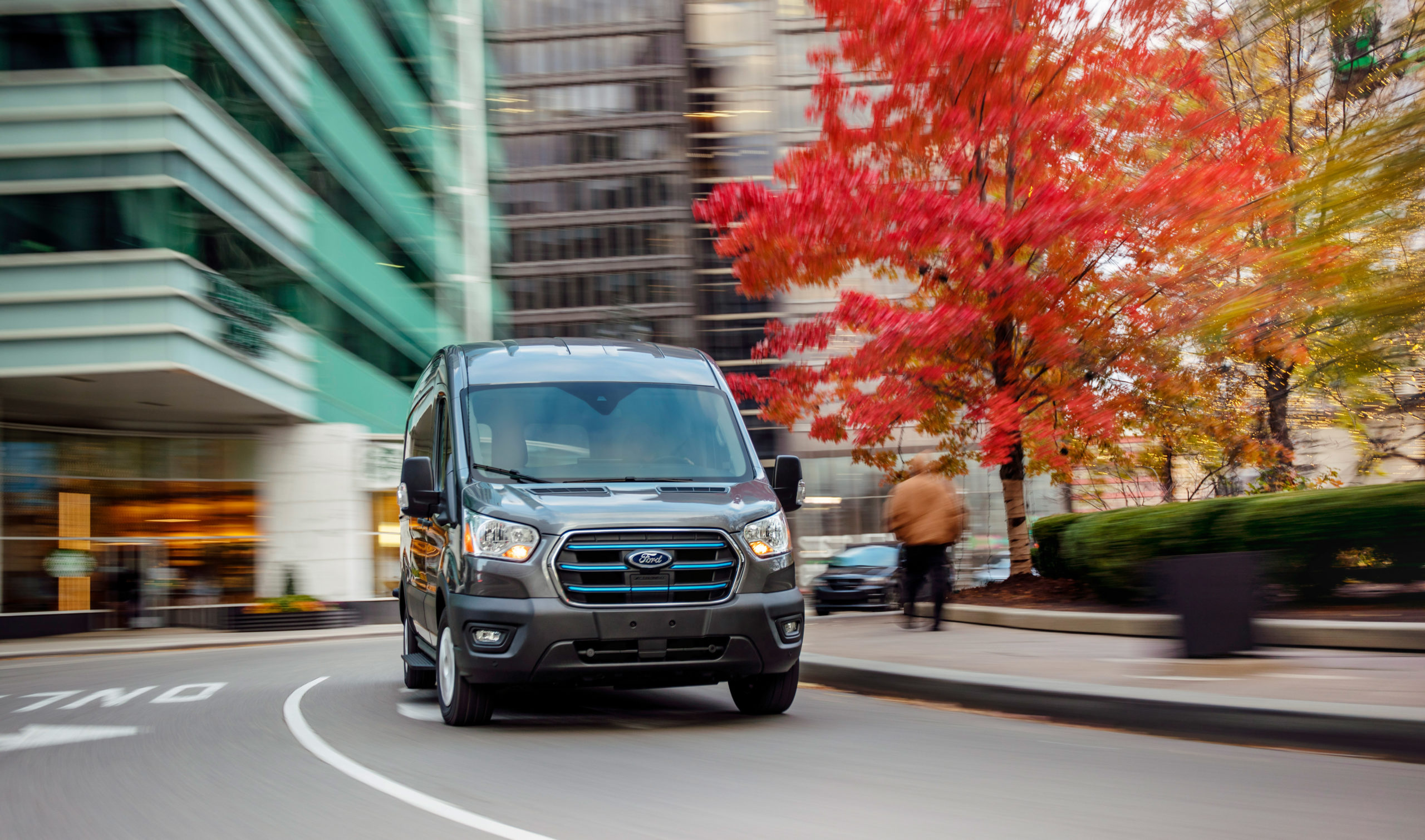
Ford reveals E-Transit
Ford has revealed details of the new E-Transit van, designed to be a smart workhorse that will offer customers enhanced productivity enabled by its fully electric powertrain, software solutions, services and Pro Power Onboard options.
“Ford is North America and Europe’s commercial vehicle leader, so the transition of fleet vehicles to zero emissions, especially for the fast-growing last-mile delivery segment, is critical to achieve our carbon neutral goal by 2050,” said Jim Farley, Ford’s president and CEO. “Ford is ready to lead the charge that started with its award-winning Transit Custom Plug-In Hybrid and EcoBlue Hybrid. It’s good for the planet and a huge advantage for customers with lower operating costs and new connected technologies that will help their businesses.”
E-Transit, which starts arriving with European customers in early 2022, is part of Ford’s more than $11.5 billion global investment in electrification through 2022. The all-new, all-electric Mustang Mach-E will be in European dealerships from early next year and the fully electric F‑150 starts hitting North American dealers in mid-2022.
In Europe, Ford has been piloting electrified commercial vehicle technology since 2018, working with officials in England, Germany, Spain and Turkey to study how drivers used Transit Custom Plug-In Hybrid vehicles in London, Cologne, Valencia and Ankara. The company has applied those learnings – including on users’ vehicle use and charging habits – in developing E-Transit and its services.
Range, charging solutions tailored for business
With a usable battery capacity of 67kWh, E-Transit offers an estimated driving range of up to 217 miles on the combined WLTP cycle, 1 providing enough range to meet daily requirements, but with sufficient additional capacity to account for variations in vehicle load and weather conditions.
This makes E-Transit ideal for urban environments, fixed drive routes and deliveries within geofenced zero-emission driving zones, without requiring fleet owners to pay for excess battery capacity they don’t need.
